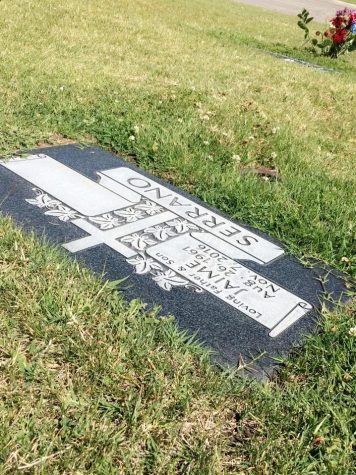Changing the Path
October 18, 2018

November 7th is drawing near. This doesn’t seem like a major day for most people — it can mean many things: birthdays, anniversaries, days of promotion. For some, it is an amazing day they wouldn’t trade for the world. But for me, I remember it as one of the worst days of my life.
It was the first day I saw someone die.
That someone was my Tío (Uncle) Jaime. He was 55 years old, and by the time I said goodbye to him, his skin was as cold as ice. I knew he was gone before I even had a chance to say anything that would bring me closure. We were 1,000 miles from home, all the way in Simi Valley, California. The entire waiting room had been taken up by shocked family members who didn’t know what had happened. Some were crying, while others were trying to answer the endless bouts of questions they had. But with every answer came more questions, and eventually led us to a brick wall.
Jaime Serrano died at 1:20 A.M on November 7, 2016. About a month would pass before the autopsy would come in, telling us he died of Exsanguination — also known as blood loss. He was one of the estimated 19.6 million Americans who suffered from addiction. Of course, when I say that, people will suddenly have many questions as to why he didn’t just stop, why it was hard for him to do so, why he drank so much when it made him so sick, and other variations of the same inquiry until I feel like I’m going to rip my hair out. The truth is, addiction isn’t something that can just be remedied by stopping cold turkey. If it were, would we have the problem with addiction that we have now?
In every year of my high school career, I have heard people worrying about how addiction can affect teenagers. The most notable ones this year are pretty easy to spot — they’re the ones with the hoodies, sneaking a hit from a Juul during a class. Or they gather in the bathrooms to pass one around, reviving the concerns of nicotine addiction. Parents and staff are scratching their heads, wondering just what can be done to keep kids from getting addicted. Their solution was simple: they would tell kids not to do drugs and call it a day. But as someone who has seen addiction take root in their own family and how it works, their solution feels like it was the first one thrown at the wall to see if it sticks.
The thing is, the administration’s attempt to curb drug use has not worked out one bit, but they refuse to make a change in how they deal with it. However, I can’t just make this claim without any sort of research, so I personally decided to do a questionnaire on Google Forms. The responses obviously couldn’t paint a picture of the entire U.S, or even of all of Dakota Ridge, but a pattern was still noticeable. Of those who believed they were addicts, 66.7% admitted their addiction began during their high school years.
So the cure-all didn’t work the way they wanted it to. Shocker. But what are they to do? Teen drug use isn’t something we can just fix by leaving it alone, but it also can’t be fixed by applying a one-size-fits-all solution. If we want to stop young people from getting hooked on drugs, there has to be a way to do so that can help those who have already started. I doubt teens who feel they need help to quit whatever they’ve become hooked on will feel like their school is the place to confide in when they’ve had to spend so much time hiding their addiction, instead becoming more paranoid of the adults they were supposed to trust as the days go by.
Maybe all of this energy used for punishing teen addicts could be funneled into focusing on treatment for them. Wait lists for rehabilitation centers can exceed months — even years — and that the costs for inpatient rehab (even with insurance) are ridiculously high. For people in low-income brackets, they can’t afford to get better and are instead stuck in a cycle of using and feeling guilty for doing so again. This leaves them unable to get help, unable to find support in those they trust, and overall feeling more alone than ever.
Addicts are some of the most looked-down-upon people, even when they finally manage to get clean and attempt to get help for their problems. Instead of kicking these people while they are down, maybe we should extend a helping hand. It could go a long way, and even save someone’s life.
I’m not sure if my Tío Jaime would still be here if he went to rehab; my entire life, I remember him flipping between rehab and normal life so often it was hard to keep track of where he was and if he was okay. But it’s too late for him. I can’t change the past. But I am certain there’s another kid in high school right now traveling the same path my uncle took. If things change for them now, then maybe they’ll be able to take the path he never did.


